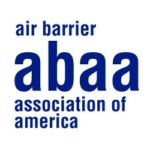Member Spotlight: Jeff Speert
The Air Barrier Association of America (ABAA) dives inside the career of Jeff Speert, Principal, Office Director for 4EA Building Science in Seattle, WA. In this feature interview, learn what made him become an ABAA member, what led him on his career path, and get his perspective on the future of the air barrier industry.
 Jeff Speert, AIA LEED AP
Jeff Speert, AIA LEED AP
Jeff Speert is a Principal and Office Director at 4EA Building Science (team4EA.com), which was formerly JRS Engineering LLC. His passion for building sustainability and durability and fascination with tectonics and construction methods led him to a building science career in 2008. His education and career path include work as a carpenter in the construction industry, a master’s degree in Architecture, professional practice with several small- and mid-sized architecture firms, and residential design/build projects before assuming leadership of 4EA’s Seattle office.
Jeff is a building science generalist with an interest in elements that provide energy efficiency, including air barriers and thermal bridging. His technical depth in building science and foundation in architecture and design have helped build the 4EA culture—tackling the challenging task of harmonizing aesthetic vision with the high-performance demands of contemporary building enclosures.
Jeff is an industry leader and a sought‑after speaker who has presented at numerous regional and national conferences. He is active in committees that are working to further the use of mass timber and volumetric modular construction. He is a licensed architect in multiple jurisdictions.
Name: Jeff Speert
Title: Principal, Office Director
Firm: 4EA Building Science
City: Seattle, WA
What was the path to your career — how and why did you pursue a profession in the building industry?
A: My path to building science consulting started in architecture school. After grad school, I gained field experience as a carpenter working on high-performance residential design/build projects, and several years in traditional architectural practice. Though all this great mix of experience, I found myself drawn to building science in particular as it combines my enjoyment of mechanics, constructability, sustainability, and aesthetics.
Is there anything that you believe everyone in this industry should be working towards?
A: We should be working toward measurably better buildings that are durable and energy efficient. We need to keep using the current best science that helps us make decisions to continually improve.
What role have peers, mentors, or advisors played in your career?
A: I worked with two influential, technically minded architects early in my career who were excellent at team collaboration. While learning the fundamentals of architecture and how assemble buildings, I also learned from Lex Schwartz (Ayers Saint Gross in Baltimore) and Chris Appleford (NBBJ in Seattle) how to work with others and provide guidance for shared goals.
What led you to become an ABAA member?
A: 4EA was an early leader in large building air barrier testing in the Pacific Northwest when we started in 2010. I saw ABAA as the leading organization to promote large building air barrier tightness and testing so joining was a natural fit.
Are you involved in any ABAA committees? Do you have any ABAA certifications?
A: I participated in the Whole Building Air Tightness Committee when the new ASTM E3158 standard was being developed. I have also recently joined the Washington State Working Group. Through some involvement in code and standard development, I have realized this sort of work can have a much larger impact than consulting on a single project at a time. These efforts help lead to more systemic changes.
How long have you been in the industry?
A: I have been a building science consultant for 13 years. Before that, I spent about 10 years doing a combination of architecture, design/build, and construction.
What major changes have you seen?
A: A lot has changed throughout my career. LEED® was just starting when I came into architecture, and now several great sustainability standards exist. When I made the switch to building science in 2008, the durability and energy efficiency impacts of the enclosure were not being considered on commercial buildings nearly to the degree they are now. In Washington, we have gone from no real air barrier requirements to one of the most stringent in the U.S. The 2018 code will put some real teeth on delivering effective air barriers on all new buildings.
What traits or skills do you think are necessary to be able to succeed in your industry?
A: To be successful in the enclosure consulting industry, it takes being a good listener to help clients meet their goals. Teaching is also important. This field is not one that is taught well at most universities, so staff need training on the technical pieces of the work. At 4EA, we also see our job as educating decision makers on options so they feel well informed when making decisions.
Do you have any advice for anyone starting out in your field?
A: I will pass along the same advice I was given by an architect when I was in high school: Get hands-on construction experience. Spending time constructing a building is highly valuable for your understanding of how to design, and also gives credibility when collaborating with builders.
What do you think the industry will look like in five or ten year’s time?
A: As energy codes continue to become more stringent, there will be more of a need for building scientists who understand the complexities of air, vapor, and thermal control. In the next five to ten years, we will continue to see the slow arc toward lowering our carbon consumption.
